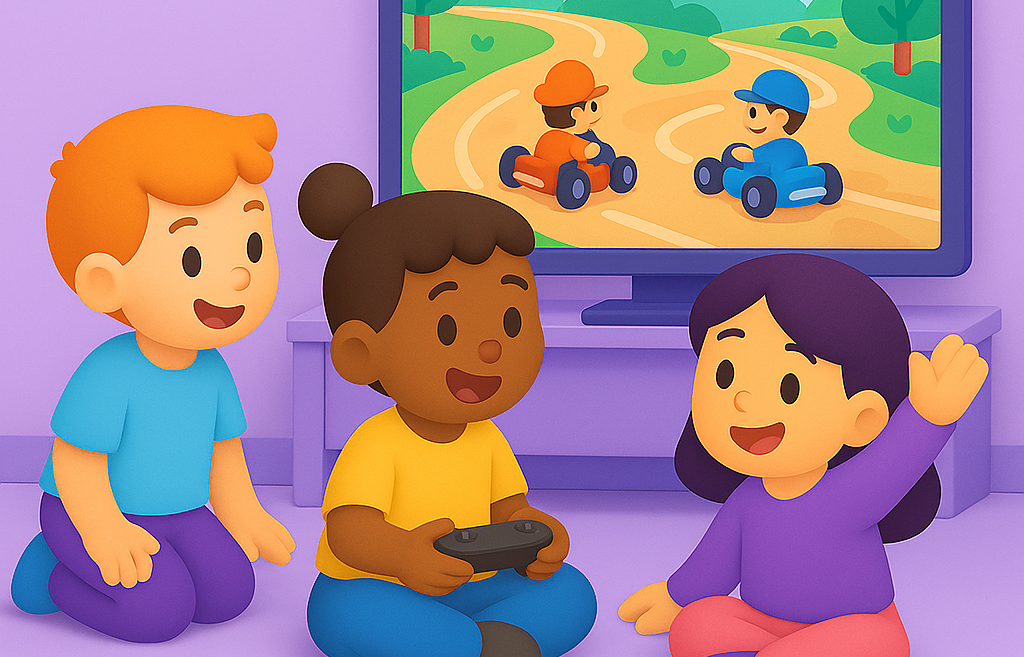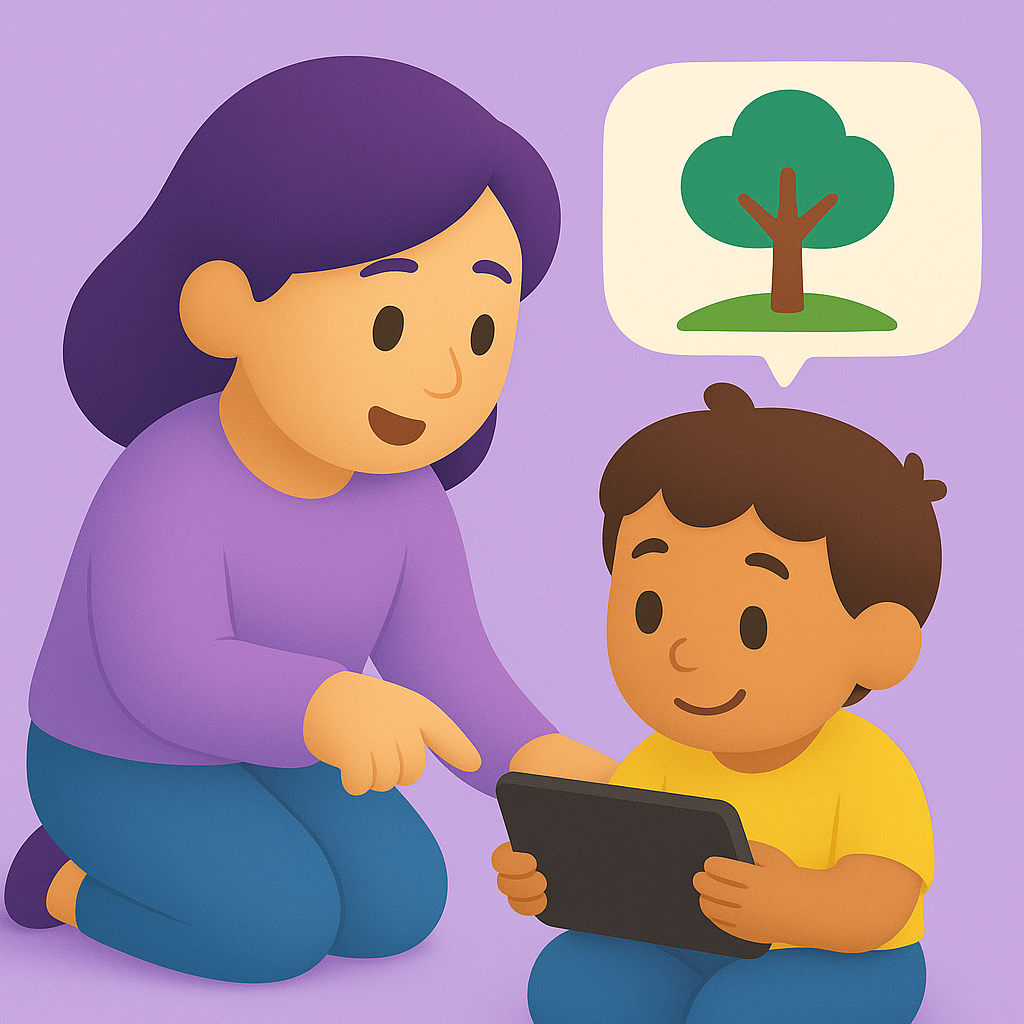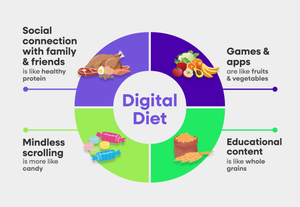Over the past decade, researchers have discovered that playing video games can actually boost IQ.
Consider the large 2022 study that followed nearly 10,000 U.S. children aged 9–10 and measured their cognitive abilities two years later. After controlling for genetics and socioeconomic factors, researchers found that kids who played more video games than average gained about 2.5 IQ points, with no similar benefit seen from watching TV or using social media (a win for active screen time!).
Swedish neuroscientist Torkel Klingberg sums it up well, when he says: "Our results support the claim that screen time generally doesn't impair children's cognitive abilities, and that playing video games can actually help boost intelligence."
IQ, though, is just one measurement of the brain and of development in general. What's just as compelling is the additional research that shows a positive impact of video games on intelligence, cognitive development, and applied skills.
Research doesn't show us only that games offer some value to kids — it's actually pretty clear there is a lot of value to be had, one of which is making kids smarter.
Examining the Research on Video Games & IQ
In the study mentioned above, scientists focused on the intelligence quotient (often referred to as IQ), which is a common way of measuring someone’s capacity to:
- Learn
- Reason
- Solve problems
- Understand complex ideas
While IQ is useful to give us one standardized measure of certain cognitive abilities at a given point in time, it’s not a perfect or complete picture of intelligence. For example, it doesn’t necessarily capture:
- Creativity
- Emotional understanding
- Life skills
Lucky for us, there is a wealth of other research out there that has looked at the relationship between video games and these other kinds of intelligence, including problem-solving and spatial reasoning, persistence (a very important life skill!), emotion regulation, and social skills, such as empathy.
What’s powerful about their work is the reminder that modern games go so far beyond entertainment. They’re complex, interactive systems that can provide rich opportunities for learning and growth when they’re developmentally appropriate and engaged with meaningfully.
Now, ready to get even more geeky with it? This study’s title really says it all: “Playing Super Mario induces structural brain plasticity: gray matter changes resulting from training with a commercial video game.” Let’s break down what this means.
Playing Super Mario every day for just two months didn’t just make participants better at the game, it literally changed their brains (more specifically, their neuroplasticity). The study used MRI scans to show increases in gray matter in areas linked to spatial navigation, strategic planning, working memory, and motor coordination. It offers striking evidence of how games can drive structural brain changes through repeated, engaging challenges.
All of this research reinforces so much of what I’ve learned about the impacts of screen time. When games are well-designed and developmentally appropriate, they create an environment that motivates consistent practice of complex skills — and that practice can have measurable, lasting effects on how and what we learn.
A good example is Civilization (2K Games). This is a strategy game where you try and conquer the world by leading your civilization to victory. But along the way you learn about some of the great leaders of history, the importance of diplomacy, and what the wonders of the world are and why they matter. That’s real content retention and curiosity sparked by play.
Not All Video Games Are the Same
When I say all video games aren’t the same, I’m not talking about genres or themes, really. I’m referring to their actual design and content. How are they built (for a kid?) and what are they offering to the player?
All games can teach something but some focus more on:
- Visual processing (fast-paced games)
- Strategy and resource management (Animal Crossing, Minecraft)
- Collaboration and communication (Lego, Fortnite, Mario Kart)
Yes, even Mario Kart has something to teach us about healthy competition, strategy, and if nothing else, how to be a gracious loser. Fast-paced games are teaching hand-eye coordination, frustration tolerance, and quick communication. It’s not less value, it’s different value. What makes a game developmentally valuable is that it’s developmentally appropriate. A game rated E might still be too complex or frustrating for a kid of a certain age or stage in their development.

Regardless of the type of games our kids are playing, they are learning through playing them.
Beyond IQ: Games Teach Life Skills
IQ is just one piece of the developmental puzzle. Skills like persistence, empathy, problem-solving, and self-regulation matter just as much. In their daily lives, these skills often matter even more than raw intelligence. Games, especially when paired with co-play or conversation afterward, are a rich space for building these abilities.
One of the most powerful things games offer is the chance to apply learning in real time. They create a safe space for failure, where kids can try, adjust, and try again without real-world consequences. That kind of repeated trial and error builds a growth mindset, the belief that skills improve with effort, and teaches resilience when things don’t go as planned.
Games also give kids opportunities to take on different roles and perspectives. Whether it’s negotiating with a character in Animal Crossing or collaborating with a sibling in Lego Fortnite, players practice perspective-taking and social-emotional skills in ways that feel natural and engaging. And because these lessons are learned in the flow of play, they tend to stick more than if they were presented as rules or lectures.
Even core cognitive skills, like critical thinking and flexible problem-solving, get exercised in gameplay. Many games require planning multiple steps ahead, adapting to new challenges, and finding creative solutions under pressure. In traditional learning, there’s often less room to experiment, but in games, experimentation is built into the experience.
The result is a kind of applied learning that’s hard to replicate elsewhere. Kids aren’t just absorbing information, they’re practicing how to use it, in dynamic, challenging, and often social environments. That practice, over time, can be just as important as any measurable gain in IQ.
A Holistic Look at Video Games’ Impacts on Kids
All of these studies show us the mind-boosting powers video games can have on IQ, life skills, and other developmental aspects in kids. But there’s more to consider when it comes to the impact of digital play.
Parents often have questions about what gaming might do for:
- Physical activity and health
- Academic performance
- Emotional regulation
- Sleep quality
Screens can support or disrupt these areas depending on the content, timing, and how they’re used. For instance, screen time right before bed can make it harder for some kids to wind down, but earlier in the evening, calming and structured games can actually help transition toward quieter activities. Building healthy sleep habits means building healthy nighttime screen habits in kids, too.
Outdoor play and active movement don’t automatically disappear when games are part of the mix, either. Both can coexist, especially if families treat gaming as one activity in a balanced day. In our Summer Screen Time Guide, I explain how screens and outdoor play can inspire and support one another. Combined, they can do wonders for nurturing curiosity.
The same goes for school performance and emotional wellbeing. These are shaped far more by what kids are doing on screens, and whether adults are engaging with them, than by raw screen minutes. The idea of “better” screen time is just a question of quality over quantity.

You can’t just hand a device to a child, walk away, and expect them to absorb all the benefits. Engaging with our kids, asking about their game, and making sure it’s developmentally appropriate all amplify the positives and help maintain balance.
When we focus on quality, connection, and variety, games can fit comfortably alongside the other important parts of a child’s life without crowding them out. Parents can also feel less guilty about firing up the tablet (since that guilt can be more problematic than the screen time, anyway!)
Embracing Games & Screens for Well-Rounded Development
For kids ages 4–7, the goal isn’t to “boost IQ,” but to help them grow into curious, confident, emotionally aware problem-solvers who can navigate the world with resilience. Games can absolutely play a role in that growth, but they’re just one tool in a much bigger toolbox.
What matters most is how games — and screens in general — are used. I advise parents to:
- Choose content that’s developmentally supportive
- Play together or talk about what they’re playing
- Balance digital time with creative play, rest, and outdoor movement
- Use screen time with intention, not fear
Flexibility matters too. If your child is in the middle of building something in Minecraft and asks for a few extra minutes to finish, it’s okay to say yes when you can. Some games can’t be paused, and sometimes teammates are counting on them to finish a round. Understanding and working with those dynamics is part of using games in a healthy, respectful way.
Intelligence may grab headlines, but the real value of digital play often lies in the everyday moments of learning, persistence, and connection. When we focus on quality, connection, and balance, screens don’t just support smart kids, they help raise strong, thoughtful, and well-rounded ones.
Find out more in the complete Parent’s Guide to Screen Time for Kids.






 Copy Link
Copy Link
 Share
to X
Share
to X
 Share
to Facebook
Share
to Facebook
 Share
to LinkedIn
Share
to LinkedIn
 Share
on Email
Share
on Email




